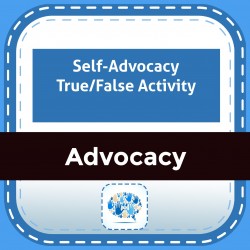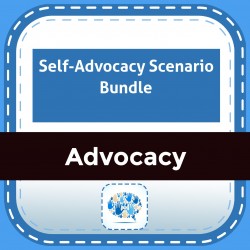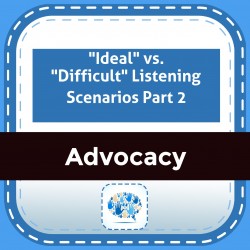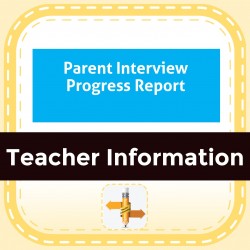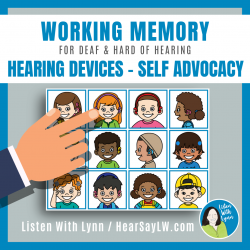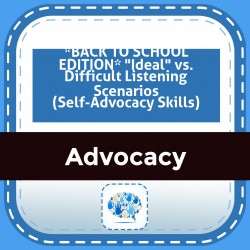Ability Levels
Categories
Resource Types
Age/Grade Range
CCSS
Anchor Standard
Speaking & Listening
Language
Reading
Sub Folder Letter for Explaining Sound Field *FREEBIE*
$ 0
Print this letter to share with classroom teachers during your inservices. Ask them to add the letter to their sub folders in order to encourage continuity of use for the sound field system
...
Self-Advocacy True/False Activity
$ 350
This product contained 20 statements in flashcard form focusing on self-advocacy skills. You can use this as a fun end of the year activity or even as an assessment to gauge your student's understand
...
ding of self-advocacy skills. This would also be an excellent way to reinforce/support the difficult concept of "true or false" with your students.Read each statement to the student. Ask them to decide if the statement is "true" or "false."
FIllable Rubric - Cleaning Hearing Aids
$ 1
Why Use This?2025 - It's updated to include hearing aids with domesIEP goal sample includedIEP goal progress monitoring is done quickly!Students and parents can see progress visually on the rubricQuic
...
kly identify what needs more practiceUse this with two social stories related to cleaning your hearing aidsSocial Story - When Your Nose Runs: ENTs, Earmolds, and Earwax.Step-by-step presentation How to Clean Your Hearing Aids with Real Student Photos
Self-Advocacy Scenario Bundle
$ 675
This product contains both of the "Ideal" vs. "Difficult" Listening Scenarios and "Ideal" vs. "Difficult" Listening Scenarios Part 2.This bundle features 30 scenarios that you can use to support your
...
students with their self-advocacy skills. Use these scenarios to discuss problems/solutions that your students may face in a variety of situations.
Remote Microphone (Touchscreen) Visual Reminder Printables
$ 150
Who else has students that forget their remote microphones when going from class to class?This product has two different-sized options to print and use for your students who may need a visual reminder
...
to bring their remote microphone with them. There is a full page reminder, and an additional page that has four smaller-sized reminders.The image is of a touch screen remote microphone.
"Ideal" vs. "Difficult" Listening Scenarios Part 2
$ 375
This product contains 15 self-advocacy scenarios for geared to help deaf and hard-of-hearing students. There are both "ideal" listening situations and "difficult" listening situations included in orde
...
r to help students develop self-advocacy and problem solving skills.Read each scenario and ask your student to determine if is an "ideal" listening situation or a "difficult" listening situation. If it is a difficult situation, what can be done to fix it?This product is best used with students who are in upper elementary grades and up. It contains both school-based and community-based scenarios.
DHH Social Story: When My Nose Runs
$ 450
Additional Comprehension ActivitiesReading Comprehension QuestionsLists of tier 1 + 2 related vocabGame board to make it fun or help that wiggly off-task child stay focusedNew Concept for Older Kids:
...
What are “endonyms”This is a story to help children/students who wear hearing aids understand why they may go to the doctor and/or ENT more often than others. The story can be read for comprehension. It teaches new vocabulary and creates a wonderful language opportunity for students to better advocate for themselves at school, home, and the doctor/ENT office. This story was written with younger children and their families and older students who continue to come to school with blocked hearing aids and do not use an interpreter for language access.Service Activity for EI-ECSE Families & Home VisitsFor any family this story can be an important conversation starter, or reminder, to understand the language impact of even partially clogged hearing aids for their kid(s) who are not using signs. This can be demonstrated to parents by using a listening tube when their child’s hearing aid is plugged and cleaned and then having them listen again to the difference in clarity of language coming through the hearing aid to their child’s brain.Story Printable OptionPrint each two-page spread in landscape mode OR - Print a two-page spread but cut apart pages to show 1 page at a time. Spiral bind, 3-hole punch, or staple.Interactive Digital OptionPresent the book on a device or overhead projector. To play the digital version of the game click on the digital spinner link. Change the spinner to “3” numbers. Pick & move game pieces (pink, green, blue)QuestionsUse professional judgment when deciding on which comprehension questions to ask the student. *The advanced questions are marked with an * following the number.VocabularyTier 1 vocabulary Tier 2 vocabulary prefix Endonyms short nonfiction passage Endonym Activity Options ask students to research endodyms related to sick words show sick examples and ask them to find more
Parent Interview Progress Report
$ 0
This checklist is designed to be part of biannual discussions and monitoring between early intervention professionals and family members of infants and toddlers with hearing loss. Family members are a
...
sked to consider the different areas that can affect the rate that communication skills develop and how often their child receives attention to each of these considerations. Areas covered are: Auditory Communication, Visual Communication, and Effective Communication Strategies.
Hearing Devices - Self Advocacy Working Memory
$ 2
If you have students who are deaf and hard of hearing that need help with auditory working memory, executive functioning, and following directions, this Listening Finger Walk is a must-have! It builds
...
lds vocabulary about types of hearing loss and hearing devices. It boosts confidence and helps children feel good about their own hearing technology. It's fun for the kids and a simple no-prep resource for you. Just open the PDF on your screen or print it and go!The colorful playing board features 16 children wearing hearing devices like hearing aids, cochlear implants, and bone-anchored hearing systems. You can target vocabulary like unilateral, bilateral, behind-the-ear, in-the-ear, earmolds, processor, headpiece, magnet, coil, microphone, and more.This Listening Finger Walk:➼ helps build listening skills and working memory by allowing kids to work with auditory information without losing track of what they're doing.➼ targets vocabulary, descriptive skills, spoken language, and communication skills.➼ has three rounds that each increase in auditory complexity.Includes:✧ A Hearing technology or devices theme for therapy sessions or school lessons✧ Listening and Spoken Language Tips✧ Print Version: Easy print and go!✧ Digital Version No Prep Ready to screen sharePlease Note: This activity and the Positive Self-Concept Auditory Learning Games contain similar images of the same children. The resources both target self-advocacy but have different auditory and language-based goals. You will want both resources you will want in your Summer Toolbox.◈ ◈ ◈ ◈ ◈ ◈ ◈ ◈ ◈ ◈ ◈ ◈ ◈ ◈ ◈ ◈ ◈ ◈ ◈ ◈ ◈ ◈ ◈ ◈ ◈ ◈ ◈ ◈ ◈ ◈ CUSTOMER TIPS:➼ Questions? EMAIL ME before purchasing this resource or anytime later♥ ♥ ♥ Sign-up HERE for the Listen With Lynn Emails♥ Let’s Connect:InstagramFacebookKeep up your excellent work. I am blessed to help along the way.Thanks so much!Lynn Wood
*BACK TO SCHOOL EDITION* "Ideal" vs. Difficult Listening Scenarios (Self-Advocacy Skills)
$ 375
This resource contains 15 possible listening situations for DHH learners. Read each scenario and have your student decide if this is an "ideal" listening situation or a "difficult" listening situation
...
 Your browser is out of date. For best experience switch to latest updated Browser.
Your browser is out of date. For best experience switch to latest updated Browser.
 Get Chrome
Get Chrome Get Edge
Get Edge Get Firefox
Get Firefox
